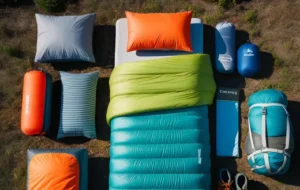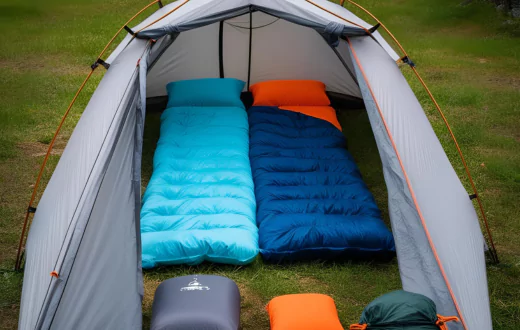Would you like to build a camping sleep system for better comfort while sleeping at night in an outdoor campground?
When I didn’t know how to build the best sleep system, I tried it myself – and I eventually succeeded when I went camping.
I’m sure you might not know how to do that either. Don’t worry! I will discuss camping and how to create a better sleeping system.
I will share my personal experience with outdoor sleep and provide camping sleeping tips.
How to Sleep Comfortably While Camping
Have you ever wondered how to sleep better while camping outdoors? I certainly have!
Don’t worry! I’ll break it down step by step. Here’s how you can sleep comfortably while camping at night.
The first issue is that you might not have a proper camping sleep system.
If you’ve never used a tent sleep system before, that could be a major reason for discomfort.
When camping outdoors, having the right gear, proper planning, and essential knowledge is crucial for a good night’s sleep.
If you want to sleep well at night at a campsite, you need to understand the key components of a proper camping sleep setup.
To build the best camping sleep system in a tent, you should follow some basic guidelines.
Understanding the Components of a Camping Sleep System

Think about how you sleep at home – what do you need for a good night’s rest? What kind of environment and temperature are ideal for you?
The same principles apply when camping. To sleep comfortably outdoors, it’s important to understand the key components of a proper camping sleep system.
Here are a few essential elements to consider:
- Sleeping Bag: A quality camping sleeping bag helps regulate temperature, keeping you warm in cold conditions. I highly recommend using a sleeping bag designed for the specific weather conditions you’ll be facing.
- Sleeping Pad: A sleeping pad provides insulation and comfort, improving sleep quality. I’ve used one for years, and I can confidently say it’s an essential part of any good camping sleep setup.
- Pillow: A pillow is crucial for better sleep, even when camping. If you don’t have a traditional pillow, consider using an ultralight backpacking pillow for convenience and comfort.
- Camp Considerations: Choosing the right campsite is vital, especially for night camping. From my experience, selecting a location that suits the season and environment makes a significant difference. Always consider factors like terrain, temperature, and weather conditions when setting up camp.
By understanding these components, you can create an effective camping sleep system and sleep comfortably outdoors.
Camp Setup for Better Sleep
Setting up your tent in the right location is just as important as having the right gear.
Avoid pitching your tent on steep inclines, uneven terrain, or low-lying areas where water may collect.
For the best sleeping experience, choose a safe, comfortable, and scenic spot.
When I set up camp for the night, I always look for a cool, level area before pitching my tent.
You could call it my personal cold-weather camping sleep system—I love camping in mid-level winter environments.
Temperature Control
We’ve reached the final and most challenging aspect of a good camping sleep system temperature control.
This is one of the biggest difficulties for night campers who want to create the best outdoor sleeping setup.
It may seem complicated, but don’t worry!
I’ve been through it and know what works. So, what’s the solution?
The key is to adjust your gear based on the weather conditions:
- In cold weather, use an insulated tent designed for winter camping to retain warmth.
- In hot or warm conditions, avoid heavy gear that traps heat and opt for breathable, lightweight materials instead.
By properly managing your sleep setup, you can maintain a comfortable temperature and enjoy a restful night at the campsite.




